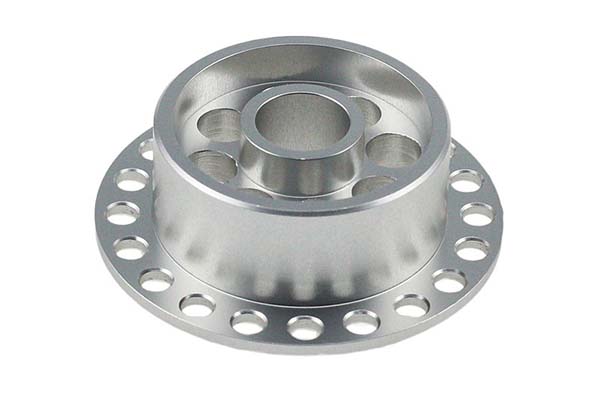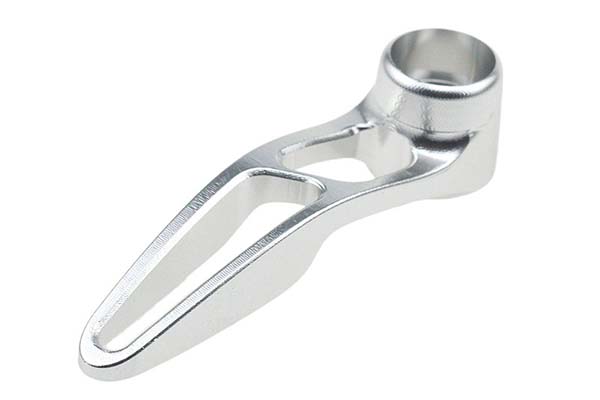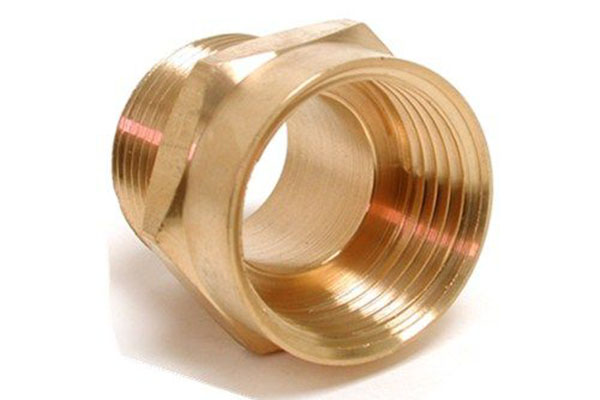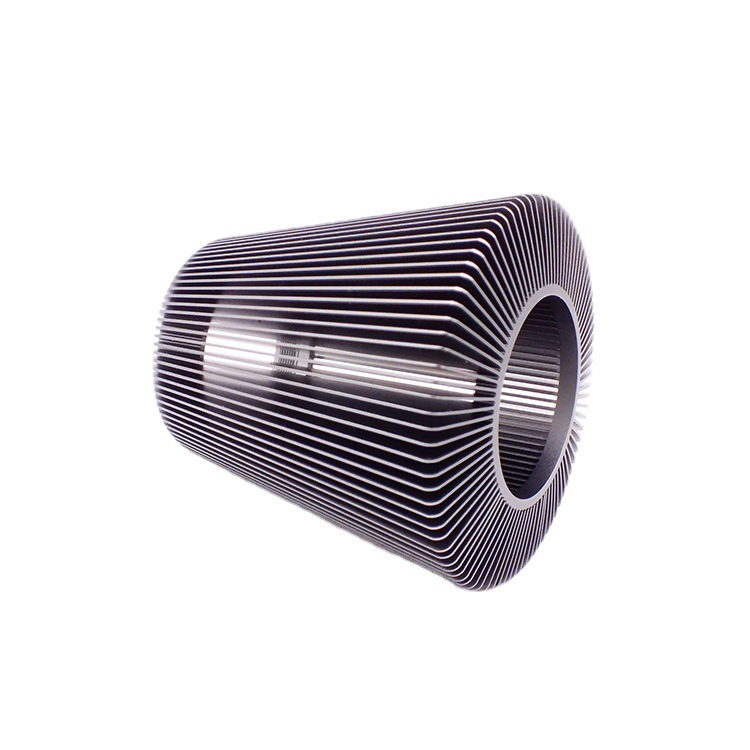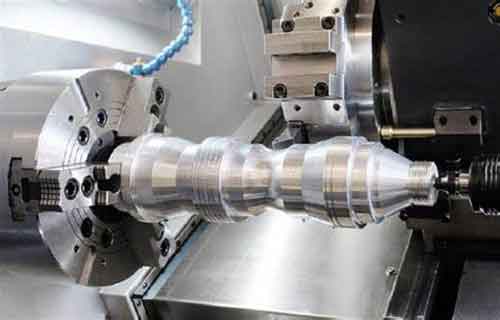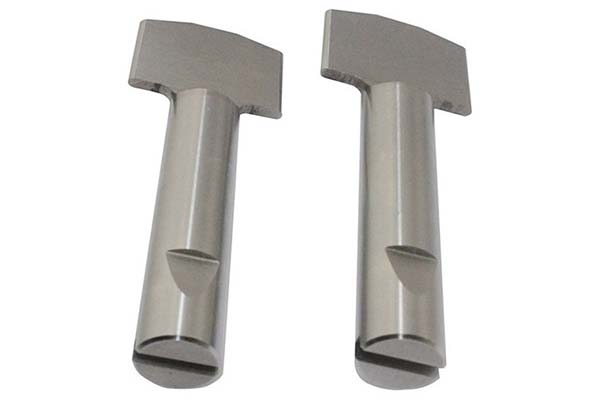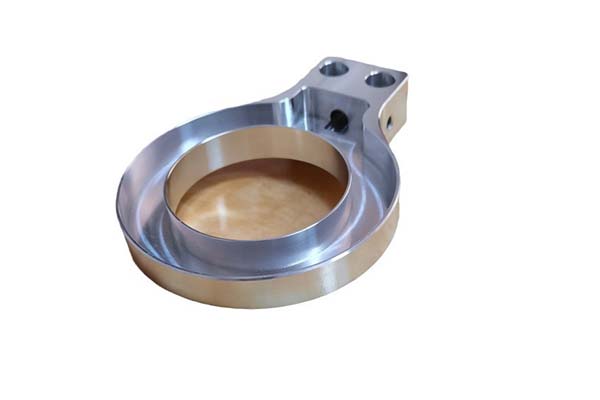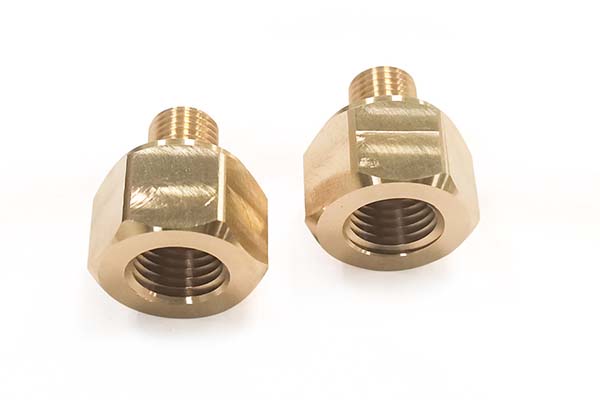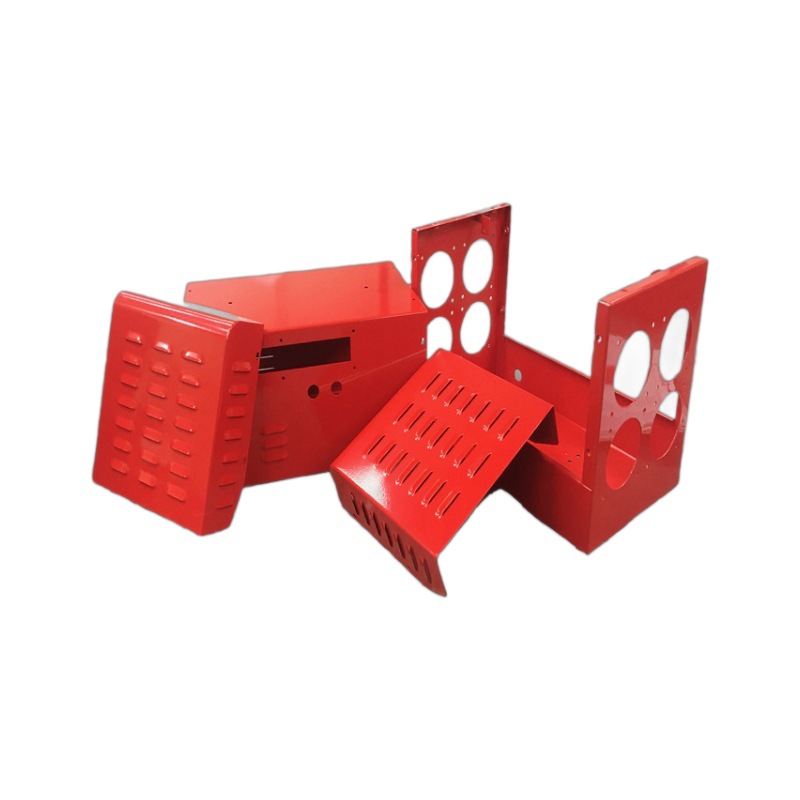Yigu: Aluminium milling is a common yet tricky process in manufacturing. Many operators struggle with achieving a smooth surface finish, often ending up with tool marks or burrs. Choosing the wrong tools or machining parameters can lead to excessive tool wear, increasing costs and downtime. Understanding how aluminium's unique properties affect milling processes is another hurdle, as its softness and high thermal conductivity can cause issues like chip adhesion. In this guide, we'll address these pain points and provide a detailed breakdown of everything you need to know about aluminium milling.
Milling Processes and Techniques: Mastering Aluminium Cutting
Key Milling Methods
Conventional milling vs. climb milling is a critical choice for aluminium. Climb milling is generally preferred because the cutter rotates with the workpiece feed direction, reducing tool wear by 30 - 40% compared to conventional milling. It also produces a smoother surface finish, with an Ra value 1.6 - 3.2 μm lower than conventional milling for the same parameters. For example, when milling a 6061 aluminium plate, climb milling with a 10mm carbide end mill can achieve an Ra of 1.6 μm, while conventional milling might result in an Ra of 3.2 - 6.3 μm.
Face milling is used to create flat surfaces on aluminium workpieces. A face mill with carbide inserts can remove material at a rate of 50 - 100 cm³/min, depending on the cutter diameter and feed rate. Peripheral milling (also called side milling) is ideal for creating vertical or inclined surfaces, with end mills being the tool of choice. High - speed milling of aluminium uses spindle speeds of 10,000 - 30,000 RPM, reducing cycle time by 50 - 70% compared to conventional speeds. It also minimizes heat buildup, which is crucial for preventing aluminium from softening and adhering to the tool.
Dry vs. Wet Milling
Dry milling of aluminium is possible for some applications, especially with coated tools that reduce friction. It eliminates the need for coolants, simplifying the process and reducing costs. However, wet milling with a coolant system is better for high - speed or heavy - duty milling. Coolants (typically water - soluble oils) help flush away chips, reduce tool temperature, and improve surface finish. A well - designed coolant system with a flow rate of 10 - 20 liters per minute can extend tool life by 20 - 30% in aluminium milling.
Toolpath strategies also impact results. Contour milling with a circular toolpath entry reduces tool engagement, minimizing vibration and improving surface finish. Step milling (making multiple passes at different depths) is better for removing large amounts of material without overloading the tool.
Aluminium Material Properties: How They Affect Milling
Alloy Types and Machinability
Aluminium alloys vary significantly in machinability. 6061 aluminium is one of the most machinable, with a machinability rating of 70 (compared to 100 for 2011 aluminium). It’s widely used in automotive and aerospace parts due to its good strength - to - weight ratio. 7075 aluminium is stronger but less machinable (rating of 20), requiring slower cutting speeds and more frequent tool changes.
2011 aluminium is the easiest to machine (rating of 100) because of its high lead content, making it ideal for parts like screws and bolts that require tight tolerances. However, its lower strength limits its use in structural applications.
Key Properties Influencing Milling
Aluminium has a hardness of 40 - 150 HB (Brinell), much lower than steel, which means it can be cut at high speeds but is prone to deformation. Its thermal conductivity (200 - 250 W/m·K) is about five times higher than steel, causing heat to dissipate quickly into the workpiece and machine, rather than staying in the cutting zone. This reduces tool temperature but can lead to workpiece expansion if not controlled, affecting dimensional accuracy.
Work hardening is less of an issue with aluminium compared to stainless steel, but it can still occur if the tool is dull. A dull tool crushes the material instead of cutting it, increasing the hardness of the surface layer by 10 - 20%. Grain structure also plays a role; finer grains result in a smoother surface finish, which is why many aluminium alloys are annealed before milling to refine their grain structure.
Milling Tools and Equipment: Choosing the Right Gear
Milling Cutters and Tool Materials
End mills are the most versatile tools for aluminium milling. 2 - flute end mills are preferred because they provide better chip evacuation, reducing the risk of chip clogging and tool damage. A 10mm 2 - flute carbide end mill can mill 6061 aluminium at a feed rate of 500 - 1000 mm/min without chip issues.
Carbide inserts are superior to high - speed steel (HSS) for aluminium milling. Carbide has a higher hardness (1500 - 2000 HV) than HSS (800 - 1000 HV), allowing for higher cutting speeds. Coated tools (such as TiAlN or diamond - like carbon (DLC) coatings) further improve performance by reducing friction and preventing chip adhesion. TiAlN - coated carbide tools can last 50 - 100% longer than uncoated tools when milling aluminium.
Face mills with a positive rake angle are ideal for aluminium, as they reduce cutting forces by 20 - 30% compared to negative rake angles. The rake angle should be between 10° and 20° to ensure efficient chip flow.
Machines and Coolant Systems
CNC milling machines are preferred for aluminium milling due to their precision and ability to maintain consistent parameters. A 3 - axis CNC mill with a high - speed spindle (10,000 + RPM) is sufficient for most aluminium parts, while 5 - axis machines are used for complex geometries. Manual milling machines can be used for simple parts but are more prone to variations in surface finish due to operator inconsistency.
Coolant systems for aluminium milling should deliver a high - pressure stream (5 - 10 bar) to blast away chips. Flood cooling is the most common method, but mist cooling can be used for high - speed applications to reduce coolant consumption. The coolant should have good lubricity to prevent tool wear and a low viscosity to ensure it reaches the cutting zone.
Machining Parameters: Finding the Optimal Settings
Key Parameters for Aluminium
Cutting speed for aluminium is much higher than for steel. For carbide tools, a cutting speed of 100 - 300 m/min is typical, while HSS tools are limited to 50 - 150 m/min. For example, a 10mm carbide end mill can mill 6061 aluminium at 200 m/min, resulting in a spindle speed of 6366 RPM (calculated as (1000 × cutting speed) / (π × tool diameter)).
Feed rate depends on the number of flutes and the chip load (the amount of material each flute removes per revolution). For aluminium, a chip load of 0.1 - 0.3 mm per tooth is recommended. A 2 - flute end mill with a chip load of 0.2 mm per tooth and a spindle speed of 10,000 RPM would have a feed rate of 4000 mm/min (feed rate = spindle speed × number of flutes × chip load).
Depth of cut for aluminium can be relatively large, up to 5 × the tool diameter for roughing. For a 10mm end mill, a depth of cut of 20 - 30 mm is possible in 6061 aluminium, reducing the number of passes needed. Finishing passes should use a depth of cut of 0.1 - 0.5 mm to achieve a smooth surface.
Parameter Optimization
Spindle speed and feed rate should be balanced to maximize tool life and surface finish. Increasing the spindle speed beyond the optimal range can cause excessive tool wear, while a feed rate that’s too low can result in rubbing and heat buildup. Tool overhang should be minimized to reduce vibration; the overhang should not exceed 3 × the tool diameter for rigid milling.
Simulation and modeling software (such as Mastercam or SolidWorks CAM) can help optimize parameters before machining. These programs can predict chip formation, tool wear, and surface finish, reducing the need for trial - and - error testing. For example, a simulation might recommend reducing the feed rate by 10% when milling a thin - walled aluminium part to prevent deflection.
Surface Finish and Quality: Achieving a Flawless Result
Measuring Surface Quality
Surface roughness in aluminium milling is measured by the Ra value. For most applications, an Ra of 1.6 - 6.3 μm is acceptable, but critical parts (such as aerospace components) may require an Ra of 0.8 μm or lower. Tool marks are a common issue, caused by uneven tool wear or incorrect feed rates. They can be minimized by using sharp tools and ensuring the spindle is properly balanced.
Burr formation is another problem with aluminium due to its softness. Using a high feed rate and a sharp tool can reduce burrs by 50 - 70%. Deburring tools or post - processing (such as vibratory finishing) may be needed for parts with strict burr requirements.
Ensuring Surface Integrity
Residual stresses in milled aluminium can cause distortion over time. To minimize this, finishing passes should use light cuts and climb milling, which generates less stress than conventional milling. Surface defects like cracks or pits are rare in aluminium milling but can occur if the tool is dull or the material has inclusions. Regular inspection with a microscope or surface profilometer can help detect these defects early.
Quality control for aluminium parts includes checking dimensional accuracy with calipers or a CMM (Coordinate Measuring Machine) and verifying surface finish with a profilometer. Statistical process control (SPC) can be used to monitor variations in surface finish and adjust parameters as needed.
Applications of Aluminium Milling: Where It Shines
Industrial and Commercial Uses
The aerospace industry relies on aluminium milling for components like wing spars, fuselage panels, and engine parts. Milled aluminium parts in aircraft must be lightweight and strong, with tight tolerances (±0.01 mm) and smooth surface finishes to reduce drag. Automotive parts such as intake manifolds, wheel hubs, and body panels are also milled from aluminium, taking advantage of its low weight to improve fuel efficiency.
Electronics enclosures for devices like smartphones and laptops are often milled from aluminium alloys like 6061. The process can create precise openings for ports and buttons, with surface finishes that enhance heat dissipation. Medical devices such as surgical instrument handles and MRI machine components use milled aluminium for its biocompatibility and ease of sterilization.
Custom and Prototyping Applications
Prototyping of aluminium parts is quick and cost - effective with CNC milling, allowing designers to test form and function before mass production. A prototype of an aluminium bracket can be milled in 1 - 2 hours, compared to days for traditional manufacturing methods. Custom machining shops use aluminium milling to create one - of - a - kind parts for industries like robotics and renewable energy, where lightweight and durable components are essential.
Yigu Technology, as a plastic metal parts custom manufacturing Supplier, excels in aluminium milling. We use high - speed CNC machines with coated carbide tools to achieve precise results, even for complex geometries. Our expertise in optimizing machining parameters for different aluminium alloys ensures excellent surface finish and tool life, meeting the strict requirements of automotive and electronics industries.
FAQ
- What’s the best tool material for milling 7075 aluminium?
- Diamond - coated carbide tools are the best choice for 7075 aluminium, which is harder than other alloys. The diamond coating reduces friction and prevents chip adhesion, extending tool life by 50 - 100% compared to TiAlN - coated tools. A 2 - flute end mill with a 15° rake angle is recommended for efficient chip evacuation.
- How can I prevent aluminium from sticking to the milling tool?
- Use a high cutting speed (150 - 300 m/min for carbide tools) and ensure the tool is sharp. Coated tools (TiAlN or DLC) reduce adhesion, as do coolant systems with good lubricity. Dry milling can also help if using a tool with a low - friction coating, but wet milling is more reliable for preventing sticking.
- What’s the maximum depth of cut for roughing 6061 aluminium with a 10mm end mill?
- For roughing, a depth of cut of 20 - 30 mm (2 - 3 × the tool diameter) is possible with a rigid CNC machine and a carbide end mill. This reduces the number of passes needed, saving time. The feed rate should be reduced by 10 - 20% for deep cuts to prevent tool deflection.
